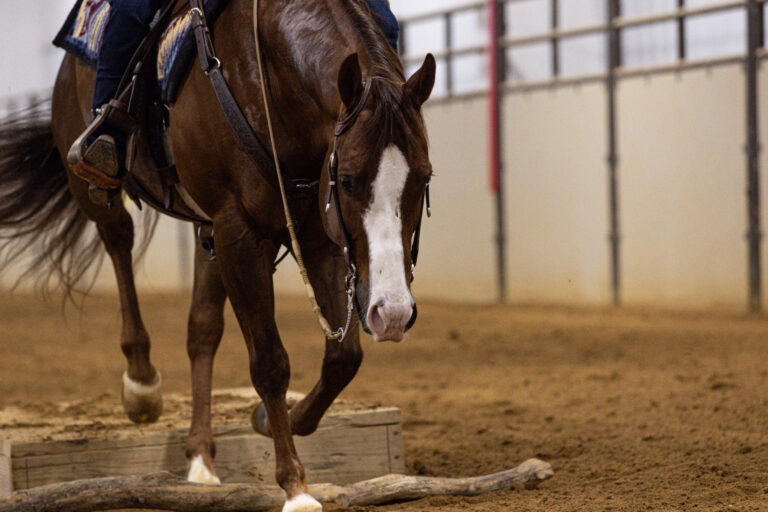Providing salt used to mean simply tossing out a salt block. These days, however, we know a lot more about our horses’ need for sodium. Here are some key do’s and don’ts from equine nutritionist Juliet M. Getty, Ph.D., author of Feed Your Horse Like a Horse.
.png)
First, some basics: Even when your horse isn’t at work, he needs at least 10 grams of sodium per day, which is found in two-level tablespoons of salt. Increase the work, and his sodium needs to increase–to at least four level tablespoons of salt per day, divided between meals. On hot, humid days, the minimum requirement can be even higher than that.
To ensure that your horse gets adequate salt:
Do: Start with a plain, white salt block placed within easy reach and, if possible, protected from precipitation. For a horse at pasture or in light work, a block can suffice, assuming he consumes enough of it (more on that in a moment).
Don’t: Use a mineralized block on its own. If your horse is already getting minerals in his concentrate or vitamin/mineral supplement, he probably doesn’t need extra in his block, and the bitter taste of the minerals might reduce how much salt he consumes. If you do give him a mineralized block, provide a plain one as well.
Do: Watch the block to make sure your horse is ingesting enough of it. A good rule of thumb: A five-pound salt block used by one horse should be consumed within two months. Keep the block clean and inviting to encourage licking; provide more than one if you have multiple horses, and watch for bullying to make sure everyone has adequate access.
Do: Supplement with granulated salt if you think a horse isn’t getting enough with the block. Plain table salt is fine; kosher salt, with its coarser texture, is even better. (If your horse is getting any commercial feed or a vitamin/mineral supplement, skip the iodized salt–he’s already getting enough iodine.) Provide two to four level tablespoons of salt per day, according to your horse’s level of activity and the heat/humidity, divided into your horse’s concentrate. (Start with small amounts and build gradually to a full dose to allow your horse to get used to the new taste.)
Do: Consider whether free-choice granulated salt, which can be an ideal middle ground between a block and adding salt to feed, might work best for your horse. For this option, secure a bucket in a weather-protected location where your horse has easy access to it, and keep it filled to the halfway point with granulated salt. (Horses whose tongues get sore licking a block will find free-choice granulated salt more inviting.)
Don’t: Use molasses-sweetened salt blocks, as horses sometimes consume these like candy, even biting off choke-sized chunks.
Do: Provide plenty of fresh, clean water (and never add salt to it).
Sodium: Why it Matters
Sodium is the main electrolyte found in the blood and the fluid surrounding cells. If sodium levels are low, the blood won’t hold enough water. This causes the adrenal gland to release the hormone aldosterone, which tells the kidneys: “Don’t let any sodium leave the body!” When the kidneys hold on to sodium, they excrete potassium in its place, creating an imbalance.
Inadequate sodium intake can promote or aggravate conditions such as anhydrosis (lack of or inadequate sweating), tying up (a muscular disorder resulting in stiff and/or trembling muscles after exertion), and a rapid heart rate.
It can also influence the horse to avoid drinking water as the body seeks to keep from flushing away sodium. (And inadequate water consumption is always a risk factor for impaction colic.)
Should you feed electrolytes?
Electrolytes, including sodium, are the minerals that control blood volume and muscle and nerve function, plus maintain the blood’s pH. The main electrolytes are sodium and chloride (the components of table salt–sodium chloride). Others include potassium, calcium, magnesium, phosphorus, zinc, iron, copper, and manganese.
Feeding electrolytes (in addition to providing salt) could be warranted any time your horse is sweating more (as in hot, humid weather and/or during heavy work or drinking less water (as during cold weather).
If you do opt to provide an electrolyte supplement (which typically will not provide enough sodium by itself); always do so in addition to providing adequate salt.






